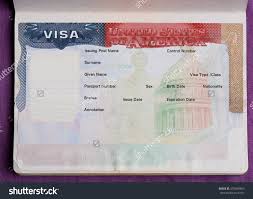A Comprehensive Guide to US Visa Applications

Introduction: The Importance of US Visas
The US visa process is a critical component for individuals seeking to travel, work, or study in the United States. As the US remains a prominent destination for millions globally, understanding the visa application process is vital for ensuring compliance with immigration laws and regulations.
Types of US Visas
The US offers a variety of visas tailored to different purposes. Primarily, these can be categorized into two groups: non-immigrant visas, which are temporary and typically issued for tourists, students, and certain types of workers, and immigrant visas, intended for individuals seeking permanent residency.
Non-Immigrant Visas
Non-immigrant visas include categories such as B-1/B-2 for tourists, F-1 for students, and H-1B for skilled workers. Each visa type has specific requirements that applicants must meet, such as sponsorship by an employer or proof of financial stability.
Immigrant Visas
For those aiming to reside permanently in the US, immigrant visas like the Family-Sponsored Visa or Employment-Based Visa are available. The application process can be complex and time-consuming, often requiring a lengthy background check and documentation.
Recent Changes in US Visa Policies
In recent months, changes in US visa policies have introduced new challenges and opportunities for applicants. Notably, in 2023, the US government began easing some restrictions related to COVID-19, which previously impacted visa processing times. This shift has led to an increase in applications but has also highlighted the significance of ensuring that all paperwork is correctly submitted, as any errors could cause further delays.
Application Process
Navigating the US visa application process involves several steps:
- Determine eligibility: Assess which visa category applies to your circumstances.
- Submit application: Complete the appropriate form associated with your visa type, typically the DS-160 for non-immigrant visas.
- Schedule an interview: Most visa applicants are required to attend an interview at a US embassy or consulate.
- Prepare for the interview: Gather necessary documents, including passports, photos, and financial records.
- Wait for processing: Processing times vary based on visa type and other factors but remain crucial to plan ahead.
Conclusion: The Significance of Being Prepared
In conclusion, understanding the US visa process is essential for anyone considering travel or relocation to the United States. By being informed about the different types of visas, recent policy changes, and the application procedure, applicants can enhance their chances of a successful application. With the anticipation of continued changes in immigration policy, staying updated is crucial for future applicants. As global mobility increases, navigating the intricacies of the US visa system will remain an important task for many individuals and families worldwide.





